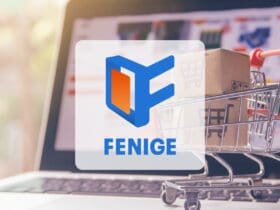Calvendo Verlag from Munich uses the blockchain to better organize the production and supply chain. Not in theory, but in real life, and not as a PR gag, but because it makes sense.
What do Korean airplane pilots and a publisher’s supply chain have in common? Why do most economic managers misunderstand the usefulness of a blockchain, and why has Ethereum lost some of its focus? Answers to this question can be found at Calvendo Verlag in Munich, which a few months ago was the first German publisher to include a blockchain in its publication and production process.
But let’s start at the beginning, there, where there is seldom a start when it comes to blockchains: with the specific problem that is to be solved. Because the managing director Hans-Joachim Jauch did not start to found a blockchain startup in order to find a solution to a problem – he used the blockchain because it is the best solution for an entrepreneurial challenge in the manufacturing economy is very common. That is why bitcoin profit must be displayed and organized professionally, we bring data from official sources BD.
Calendar, fully automated around the world
Jauch has many years of experience in publishing and IT. In 2012 he founded Calvendo, a publisher that produces calendars for retail. Over 20,000 authors and photographers from around 60 countries now use the publication service.You are responsible for designing calendars and other products, which are then produced by Calvendo at eight locations around the world and sent by the print shops to dealers and end customers in around 110 countries. Jauch makes no secret of the fact that he is more interested in a wide range than in exquisite quality: “We sell a lot of copies, but only a few of most individual titles. That is why we usually only print on request from retailers. With a publisher’s offer of over 90,000 available titles every year, we cannot afford to produce stock items in advance. We therefore use print on demand and try to deliver just in time, ”he explains.
With this model, nothing is more important than that the workflow between authors, publishers, printers and retailers runs smoothly. Creatives design their calendars on the Calvendo web platform, a jury of experts checks their submissions, issues a release for publication if necessary, and the IT system does the rest, largely fully automated: from printing on request to dispatch to the dealers. So that no delivery problems arise, it is extremely important that the system at Calvendo and its partners works as error-free as possible and that every work and shipping step is traceable.
“As soon as a new calendar has been published, we send its product information to over 3,000 dealers and various catalogs. If a copy is ordered, a status overview is required at all times, because the retailer or end customer wants to know when their goods will arrive.If you do not have reliable IT-based production and logistics monitoring for this, the effort and possible annoyance increases exponentially with the offer and the sales range. If you also produce at different locations, as we do, it is impossible to control and monitor everything manually. ”
It’s about psychology
In itself, you could do everything Of course, you can do that without blockchain. “We set up various monitoring systems before 2016, but we ran into the classic problem: The person who is the master of the database delivers the data that he wants to deliver. In previous years we had unsatisfactory contract fulfillment rates. It happened that partners had production problems and exceeded delivery times, but did not report this to us immediately or realistically. Then our system said everything was ok, but customers said otherwise. So what?”
This is where the blockchain comes into play. Of course, a blockchain cannot prevent someone from entering incorrect data into a database. For many, this is a reason to dismiss blockchain technology as nonsense. “But there is one point that is often overlooked with blockchains: if you tell your partner that a hash of the information they are providing will end up on the blockchain and remain there forever, their motivation to stay honest increases, rapidly. ”
It is not a matter of utopian demands from third parties to work flawlessly or to remove human trust from the system – but rather to avoid false or incorrect information that can have serious consequences can. “With normal databases you can change it or cover it up afterwards. With a blockchain as a real-time register, on the other hand, I turn data into facts. The partners try harder not to write anything wrong on the chain and to proactively identify problems. That is an important psychological effect. And this results in efficiency, more ability to act and a technology-based increase in trust. ”
Jauch relates an analogy from air traffic. In the 80s and 90s, Korean airlines had particularly high accident rates – despite good technology. “One reason was that the Korean culture and language leaves little room for higher officials to express disagreement. Even if the co-pilot noticed that the pilot was doing something wrong, it was culturally very difficult for him to communicate this. The consequences were fatal.“
One of the things that helped was a simple rule: The Koreans introduced English in the cockpit, a language that makes it much easier to communicate respectfully and informatively on an equal footing. History shows that smooth processes are not just technology, but also – perhaps above all – culture. And for Jauch, the blockchain has the potential to establish an expanded culture of honesty between business partners by creating transparency.
Not so decentralized, but transparent
With a partner print shop, Calvendo At the end of 2017 started to introduce the blockchain for the documentation of the production and delivery status. Bitcoin or Ethereum is not used, but the Hyperledger blockchain, a purely industrial project by the Linux Foundation and IBM. “It doesn’t cost anything, there are no coins and no miners. The features and the development environment of Hyperledger Fabric are more productive for work and supply chains. ”Jauch also had discussions with Ethereum developers, as he was enthusiastic about the smart contract cryptocurrency in 2016. But he found the developers to be arrogant and too expensive at the time. He thinks that Ethereum had “lost focus” in the past two years due to the many ICOs.
With Hyperledger, implementation was relatively easy. “We took the code, worked with it experimentally for a few weeks, then set up a suitable front end and API, and hosted our own blockchain on AWS instances at various locations. We call the system ChainPrint.“All nodes of the blockchain are under the control of Calvendo. Those who deliver or receive data get specific read or write access via API. “Of course, it does not fulfill the higher ordinances of decentralization,” admits Jauch. But that doesn’t matter either. The chain should fulfill its purpose within a limited but decentralized partner network.
Even without maximum decentralization, the blockchain is very difficult to change. Even if Calvendo started manipulating data on its AWS nodes, this would be noticed in the data structure. Jauch is therefore convinced that the blockchain offers sufficient security to provide legally binding information in a case of doubt. “We don’t work in the high security area. It’s not about Bitcoin, it’s about a production and supply chain in a distributed environment. We know each other and largely trust each other on a human level, but we also have employees and IT systems who make mistakes. We don’t want such errors to torpedo the workflow and customer satisfaction. ”
The effect of ChainPrint is convincing. The error rate is significantly reduced, “and we know much earlier when there are errors, which makes us more active and more responsive. That brings an enormous advantage in production, “explains Jauch.
The entrepreneur has already tried to offer ChainPrint to other companies. “At the moment, however, it is an ice age when it comes to blockchain. The crypto crash and some ICOs have destroyed a lot of interest and trust. Large companies have understood what our system can do and are still talking to us. But right now many managers are hesitant. ”Jauch, who has been active on the Internet since 1993, is a reminder of what it was like after the Dot.com bubble burst. Too many companies have turned their backs on the Internet and gambled away future opportunities due to their lack of interest. It is precisely these depressive phases in which you have to be vigilant and gain practical experience with a cool head. “Now the winners are emerging in the blockchain segment.”









Leave a Reply
View Comments